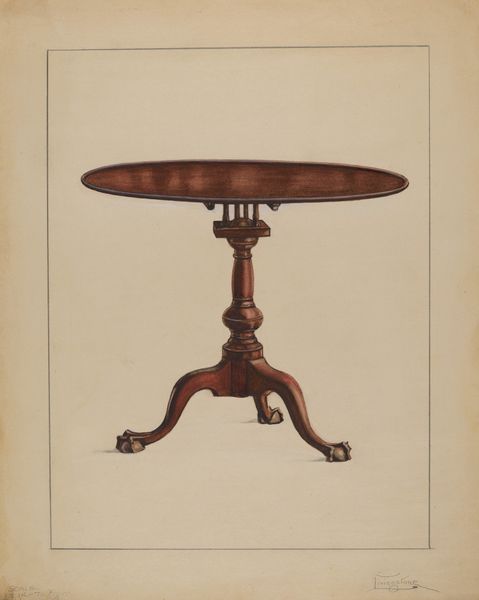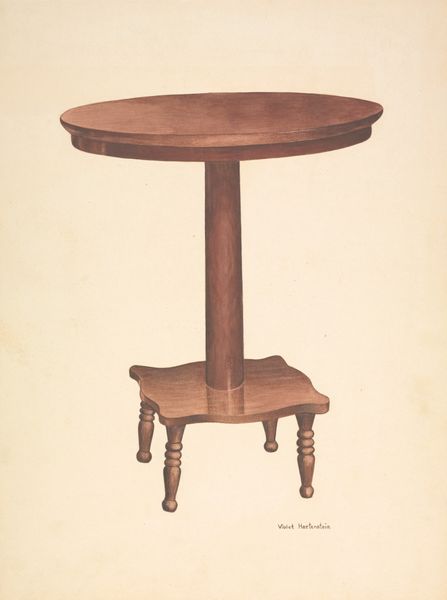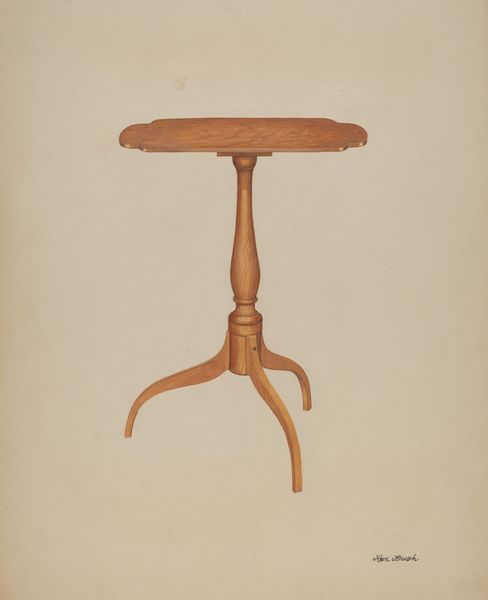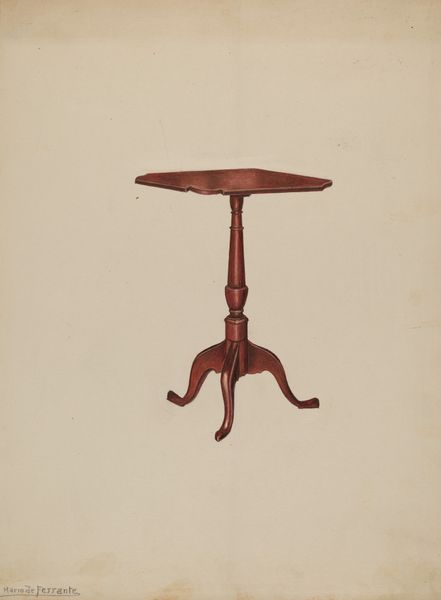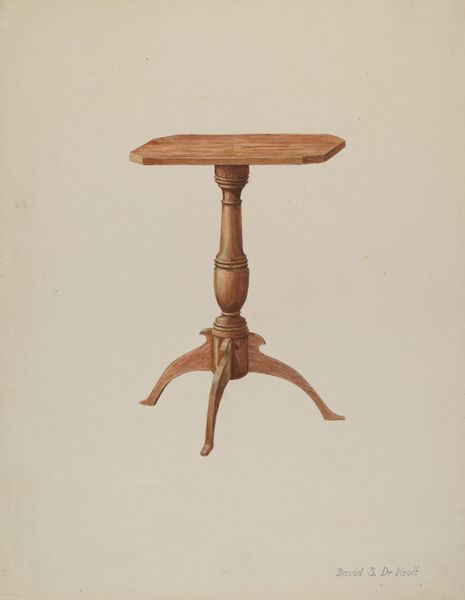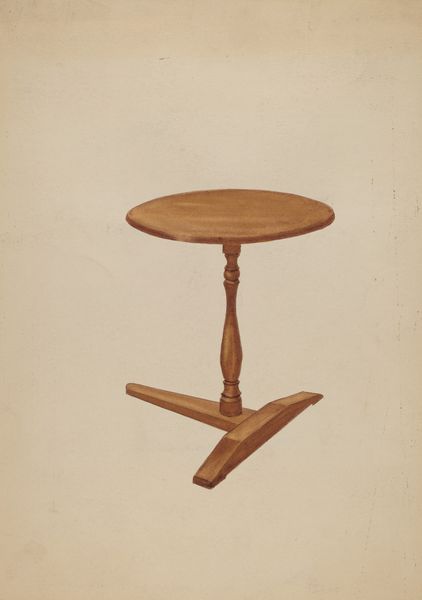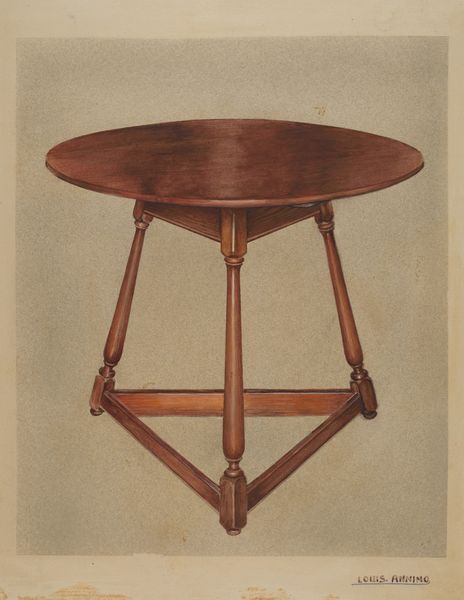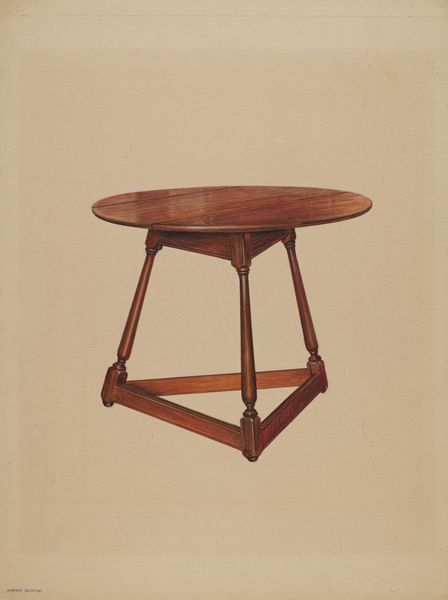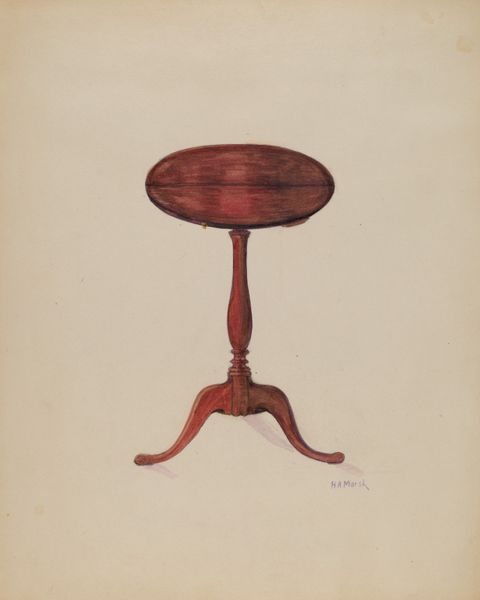
drawing, watercolor
#
drawing
#
watercolor
#
ceramic
#
watercolour illustration
#
realism
Dimensions: overall: 28.8 x 22.3 cm (11 5/16 x 8 3/4 in.) Original IAD Object: 28 1/2"high; 36 1/8"diameter; 31"deep (this meas. a bit unclear on d.s.)
Copyright: National Gallery of Art: CC0 1.0
Editor: Here we have Ferdinand Cartier’s "Tilt Table" from around 1937, a drawing rendered in watercolor. It feels so meticulously observed, like a catalog entry, but something about its isolation gives it a quiet sort of dignity. How would you interpret this work? Curator: It's interesting you use the word 'dignity'. I see that, too. In its precise rendering, Cartier elevates what is essentially a functional object. Consider the social context of the 1930s. Mass production was becoming increasingly prevalent. Do you think Cartier might be subtly making a statement about craftsmanship and the value of individual design in an era increasingly dominated by industry? Editor: That’s a perspective I hadn't considered! It reframes it less as just a record, and more as an argument about design principles, almost. Do you think it would've been commissioned by the furniture maker? Curator: Possibly. Commissions like this were ways for artisans to document and promote their wares. However, viewed from today’s lens, Cartier's approach resists the anonymity inherent in mass-produced items, especially now as design elements become free and open source. It subtly advocates for an authorship, a distinct artistic voice in creation, pushing back on this concept that design should only follow function. What does its “realism” suggest to you? Editor: It makes me think that perhaps “realism” is more about truth of craft. It prompts me to re-evaluate the value of an individual creation against the background of design history, as it moves towards open source. Curator: Precisely. And understanding how such a seemingly simple image engages with those larger socio-political forces is crucial. Thanks to works like this, even everyday objects can speak volumes!
Comments
No comments
Be the first to comment and join the conversation on the ultimate creative platform.
